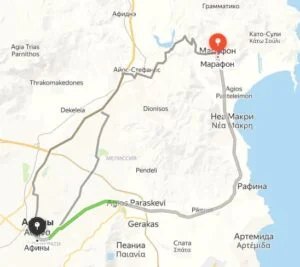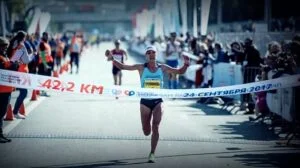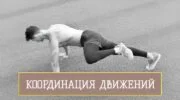In the article “Running” we will talk about the most accessible sport, consider its history, types of running disciplines, talk about modern equipment.
#Running #ProRunning #AboutRunning #Athletics #SummerSport
It would seem that there is no sport easier than running. You hear the command: “Ready, set, go!” and run until you cross the finish line. However, there are nuances here, too.
Running is divided into several types, but it is itself one of the disciplines of athletics, and athletics is the oldest sport on the planet, because the ability to run fast and throw the javelin accurately was crucial to survival. The history of athletics begins in 776 B.C.
When the first Olympics took place, only one discipline was included in its program: the “stadiodrome” which means running in stages. A stage is an ancient Greek measure of length equal to the distance an ordinary person runs in 2 minutes. It is from the word “stage” that the modern word “stadium” is derived, and it is a modern word of ancient Greek origin, just as the word “marathon”.

Everyone has probably heard the legend that a Greek warrior, after the battle with Persia at the settlement of Marathon, ran without stopping to Athens and heralded his victory there, after which he collapsed without feeling.
This beautiful story has not been documented. It is possible that it is just a legend, but the International Olympic Committee took this legend into account and in 1896, at the first games of the revived Olympics, the Marathon race was indeed held at a distance of 40 kilometers and 200 meters from Marathon to Athens. Nowadays, however, marathon runners have to overcome a longer distance, but we will tell you about that a little bit below.
As we have written before, there are several different disciplines in running:
- Sprint;
- Middle distance running;
- Long distance running;
- Barrier running;
- Relay Race.
One of the most interesting, difficult and strenuous running disciplines is the sprint, i.e. short-distance running. The length of the track in the sprint ranges from 30 to 600 meters. Scientists believe that high-class sprinters can achieve maximum speed over distances up to 60 meters, so a lot of experience is needed to win. It was this experience that allowed Usain Bolt from Jamaica to become both world and Olympic champion.

Bolt was able to run the hundred-meter run in just 9.58 seconds. That means his average speed was 36 km/hour, not every horse could catch up with him. ![]()
Because of the high speed of the sprinters, judges cannot always tell by eye who crossed the finish line first. These days, a photo finish line comes to the judges’ aid. This equipment tracks the gap between the two athletes to within ten thousandths of a second.
Not only sprinters compete at the Olympics. Intermediate-distance running encompasses everything from 400 meters to 3 kilometers. Long distances, also called stayer distances (from the word stayer – an endurance man), are counted up to 30 kilometers. These are followed by road running, which is divided into 20- and 30-kilometer distances, half-marathon, marathon, and day running.
The most famous of these is the marathon. Today its distance is 42 kilometers and 195 meters. Large-scale competitions are held on the track, but there are also cross-country starts.

The optimal temperature for organizing a marathon is +12 degrees Celsius. Temperatures over +15 degrees Celsius are already considered dangerous, and if the thermometer exceeds +28 degrees, it is recommended to cancel the start.
Many of us consider the marathon race almost the limit of the distance for athletes, but we should not forget about the ultra-long distances, which include daily races.
In 2011 in Madrid, our athletes became European champions in both men’s and women’s races. Anatoly Kruglikov ran almost 258 kilometers in one day and Lyudmila Kalinina covered 233 kilometers and 307 meters.
But this is not the limit, ultra-marathon or ultra-marathon races can also be multi-day races. Can you imagine how trained the participant of these races must be, because all this time he is running, not walking.
Speaking of walking. If it seems to you that walking is not athletic, you are very mistaken. Athletic walking is an Olympic discipline that has strictly enforced rules. The main one is that the athlete must have contact with the ground at all times, i.e. never take both feet off the track.
But, according to the survey, the most interesting running events are still the sprints. By running the distance in a matter of seconds, runners realize their full potential. During a race, sprinters use up their body’s internal reserves; they simply have to do it because the time it takes them to run the distance is less than their circulatory cycle.
The circulatory cycle is the time it takes for blood, enriched with nutrients, to travel through all the organs of the human body and back to the heart.
Consider an example. If the driver wants to increase the speed of the car, he presses the gas pedal and thereby increases the flow of fuel to the engine. The fuel burns and pushes the pistons more vigorously, which rotates the shaft, and it in turn gives the rotation to the wheels, and the car goes faster. But what about us humans?
Our muscles play the role of cylinders and pistons. It is the leg muscles, contracting and relaxing in a certain sequence, that drive a person in motion. What is the fuel? The role of fuel is played by nutrients, which the blood carries through the body. The blood also carries oxygen to the cells.
So what happens when we increase the load on our muscles? It’s the same as the car example described above. Our intelligent body sends a signal to the lungs to breathe more actively to increase the supply of oxygen, and to the heart to beat faster to increase the rate of supply of nutrients to the muscles.
But sprinters, run the distance so fast that the blood doesn’t have time to bring all the necessary nutrients to the muscles, so where does the energy come from? It turns out that it is stored in the muscles and at the right moment the athlete can use it. Then, when the race is over, the body replenishes muscle energy again.

Experts say that sprinters have a longer forefoot than untrained people, with the Achilles tendon closer to the ankle. It allows you to stay on the ground for a longer period of time when running shorter distances. It makes it easier for the athlete to push off, and the muscles that give acceleration work better.
Scientists have also proven that the barefoot foot develops and strengthens faster than the foot in a running shoe. To get closer to the maximum effect of barefoot training, American scientists invented the Free technology. They use two layers of soles made of a mixture of phylon, a soft material for cushioning, and rubber. Phylon reduces weight and rubber increases durability.

While in training athletes use shoes that emulate the barefoot effect, during performance they use ultralight shoes with cleats. Spikes weigh less than 100 grams and are made with modern technology from kevlar threads that provide support for the foot where it is needed.
In the sprint, the start has a weight of half the distance. If an athlete gets bogged down at the start, it is highly likely that he or she will not be able to come in first. At the start, the reaction times of each athlete are measured electronically. The starting blocks record all information about the athlete’s movement in real time.
The time report during the race is triggered by a starting gun equipped with an electronic sound system. The signal is transmitted to the starting blocks, which are equipped with individual loudspeakers. They allow all the runners to hear the start signal at the same time, irrespective of the distance of the starting pistol.

Running does not require any special training, the main thing is persistence, endurance, and good health. Perhaps, running can be called the most accessible kind of sport. Very often you can meet people who jog every day, and it is very and very useful for health.
Running is used by all kinds of athletes in their workouts. For example, skiers and hockey players run in the summer. Boxers‘ workouts also include jogging, and we won’t mention soccer or basketball players.
You can’t go anywhere without running in sports. If you strive for sports awards, you need to enroll in a sports school or running section, as they are in all cities of Russia. The sections will teach you to run correctly, so that running was only beneficial, because this simple process has so many components. You need to breathe correctly, distribute your strength so as not to harm your health and come to the finish line first.
About running
FAQs
What is running?
Running is a cyclical sport in which a person uses natural motion to cover distances faster than walking. A distinctive feature of running is the presence of a flight phase with a landing on the front of the foot.
What is runner's euphoria?
Runner's euphoria is a neurochemical state that makes the athlete feel happy and relaxed, ready to tackle challenges. In other words, it is the body's natural reward for physical activity, which occurs during significant but not maximum exertion.
What are the benefits of running?
Regular jogging not only reduces the risk of premature death by 27-44%, but also improves quality of life. Running strengthens joints and ligaments, the diaphragm, the lungs and bronchi, and the immune system. During running, the body produces minerals needed to strengthen bones, increases the elasticity of blood vessels, and lowers blood pressure. Prolonged running is able to burn fatty tissue, and a person experiences satisfaction similar to the pleasure of sweets and sex.









